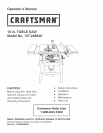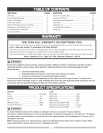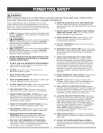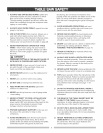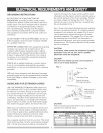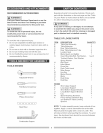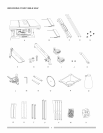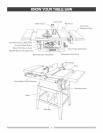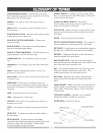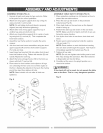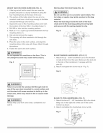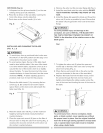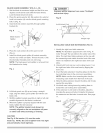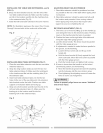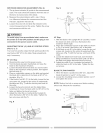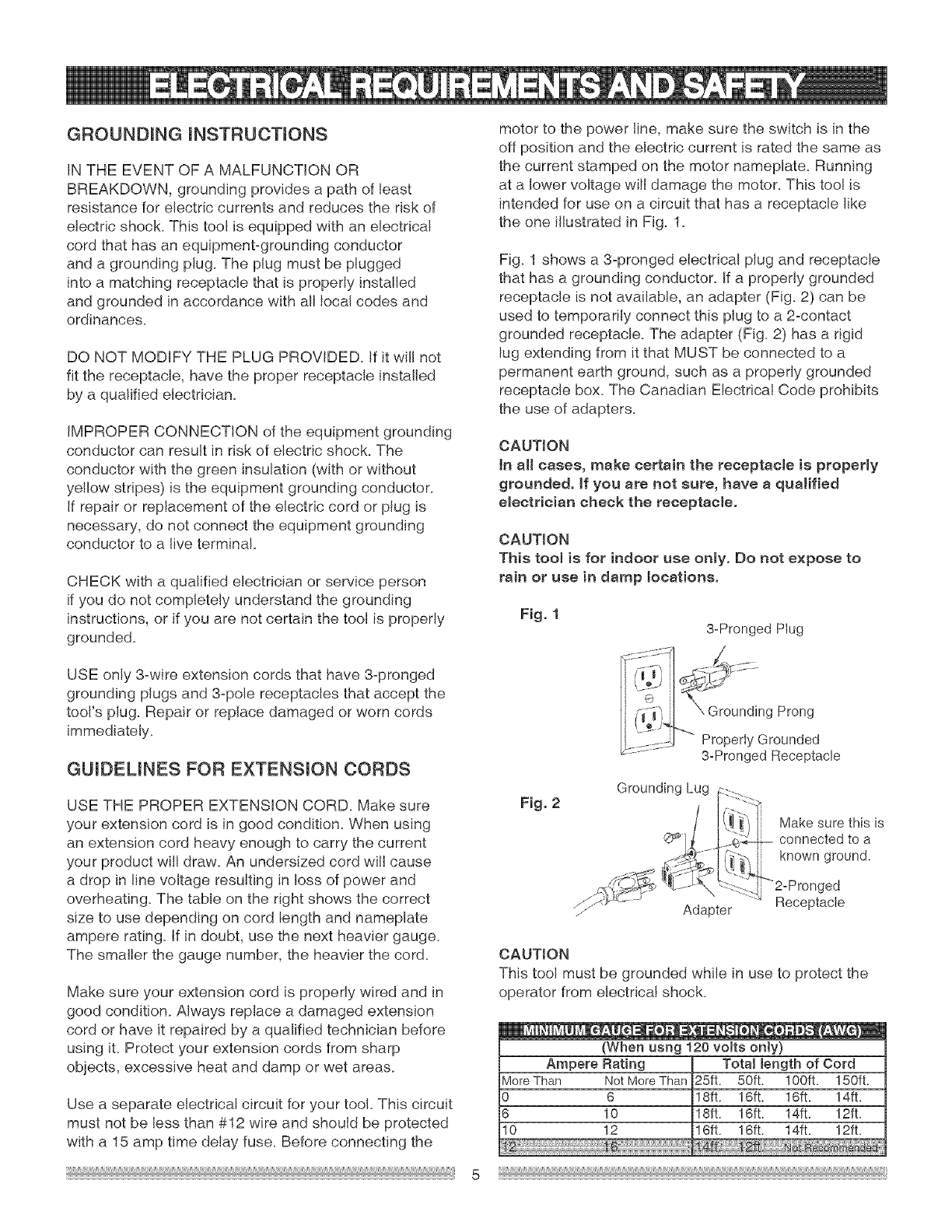
GROUND(NG (NSTRUCT(ONS
IN THE EVENT OF A MALFUNCTION OR
BREAKDOWN, grounding provides a path of least
resistance for electric currents and reduces the risk of
electric shock. This tool is equipped with an electrical
cord that has an equipmentogrounding conductor
and a grounding p(ug. The p(ug must be plugged
into a matching receptac(e that is proper(y instal(ed
and grounded in accordance with al! local codes and
ordinances.
DO NOT MODIFY THE PLUG PROVIDED. if it will not
fit the receptacle, have the proper receptac(e insta((ed
by a qualified electrician.
IMPROPER CONNECTION of the equipment grounding
conductor can result in risk of electric shock. The
conductor with the green insulation (with or without
yellow stripes) is the equipment grounding conductor.
(f repair or replacement of the e(ectric cord or plug is
necessary, do not connect the equipment grounding
conductor to a live terminal
CHECK with a qualified electrician or service person
if you do not comp(ete(y understand the grounding
instructions, or if you are not certain the too( is properly
grounded.
motor to the power line, make sure the switch is in the
off position and the e(ectric current is rated the same as
the current stamped on the motor nameplate. Running
at a lower voltage wi(( damage the motor. This too( is
intended for use on a circuit that has a receptacle like
the one i(Justrated in Fig. 1.
Fig. 1 shows a 3-pronged electrical plug and receptacle
that has a grounding conductor. If a properly grounded
receptac(e is not avai(abJe, an adapter (Fig. 2) can be
used to temporarily connect this plug to a 2ocontact
grounded receptacle. The adapter (Fig. 2) has a rigid
(ug extending from it that MUST be connected to a
permanent earth ground, such as a properly grounded
receptacle box. The Canadian EJectrica( Code prohibits
the use of adapters.
CAUT)ON
tn a(( cases, make certain the receptac(e is proper(y
grounded. If you are not sure, have a qua)ified
e(ectHc)an check the receptac)e.
CAUT(ON
This too( is for indoor use on)y. Do not expose to
rain or use in damp locations.
Fig. 1
3_Pronged Plug
USE only 3°wire extension cords that have 3°pronged
grounding p(ugs and 3°pole receptac(es that accept the
too('s plug. Repair or rep(ace damaged or worn cords
immediate(y.
GU(DELINES FOR EXTENS(ON CORDS
USE THE PROPER EXTENS(ON CORD. Make sure
your extension cord is in good condition. When using
an extension cord heavy enough to carry the current
your product will draw. An undersized cord wiil cause
a drop in (ine vo(tage resu(ting in (oss of power and
overheating. The table on the right shows the correct
size to use depending on cord (ength and namep(ate
ampere rating. )f in doubt, use the next heavier gauge.
The smaller the gauge number, the heavier the cord.
Make sure your extension cord is properly wired and in
good condition. Always rep(ace a damaged extension
cord or have it repaired by a qualified technician before
using it. Protect your extension cords from sharp
objects, excessive heat and damp or wet areas.
Use a separate e(ectrica( circuit for your too(. This circuit
must not be (ess than #12 wire and should be protected
with a 15 amp time de(ay fuse. Before connecting the
Fig. 2
g Prong
Property Grounded
3-Pronged Receptacle
Grounding Lug
Make sure this is
connected to a
known ground.
Adapter Receptacle
CAUTION
This tool must be grounded while in use to protect the
operator from electrical shock.
(When usng 120 vo(ts on(y)
Ampere Rating Tota( (eogth of Cord
MoreThan NotMoreThan 25ft. 50ft. 100ft. 150ft.
0 6 8ft. 16ft. 16ft. 14ft.
6 10 8ft. 16ft. 14ft. 12ft.
10 12 6ft. 16ft. 14ft. 12ft.



